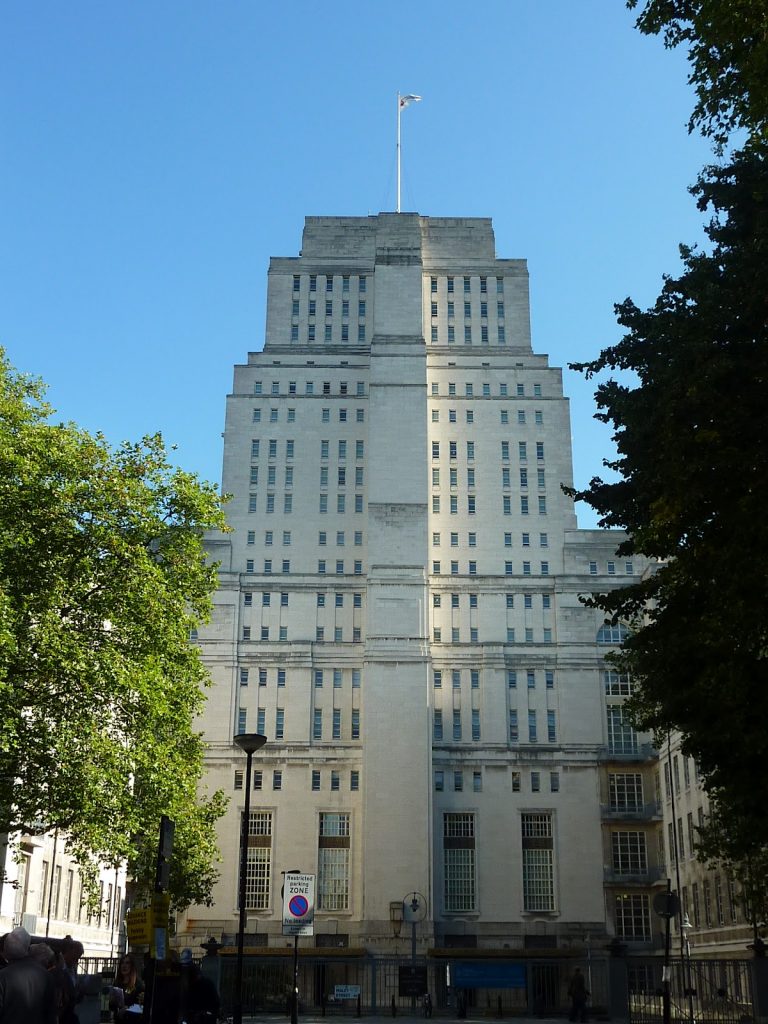Once a year we get the chance to peek behind some normally closed doors and some that normally charge entrance fees when Open House weekend rolls around again.
I’ve been enjoying these weekends for many years now and there is always somewhere new to visit. There are so many places on offer it’s a challenge to see how many you can get to and it’s fun to see the other Open House fans, easily identified clutching their green guide books and a map of London.

The trusty Open House guide book
This year we managed just 5 properties on the Saturday but were incredibly lucky with the sunny weather as the Sunday saw a massive storm sweep over the country and drench London. The highlight was undoubtedly the Royal Courts of Justice due to the grand scale of the building inside and outside and the stories about what happens in the courts themselves. Built in 1870 in unmistakable Victorian Gothic style it is a huge building and full of interest. Once through the security screening, we could wander all around the building and a few of the actual courts were open for visiting (but not for photographing). In the Lord Chief Justice’s Court, we were treated to a brilliant talk by one of the top Ushers and the Tipstaff about their work and the work of the Courts. It was fascinating, full of history and information about how the courts work today and their position in our legal system and how many common phrases came into being such as ‘called to the bar’ and ‘taking silk’. The Tipstaff was in full elaborate uniform and described his ceremonial role but also his work in child abduction overseas cases, merging the traditional and the modern responsibilities. The seriousness of this court was highlighted by the very solid looking bars on the dock!

The magnificent main hall, Royal Courts of Justice
We were allowed access to the cells and hopefully, that will be my only visit especially as we made the daunting walk from the cells to the Police vans waiting outside to take prisoners in locked units away to prison. It made me shudder and I was pleased to be back in the main building and outside in my freedom!

Hope you never have to enter the cells!

The imposing exterior of the Royal Courts of Justice
On our busy day we also visited Puskin House, Dr Johnson’s House, the chapel in King’s College, the Roman Bath and the London School of Hygiene and Tropical Medicine.
The College Chapel was designed by George Gilbert Scott who was given the job when the college decided their previous chapel was not worthy of their status! Recent refurbishments have revealed the decoration behind the whitewash that covered walls and pillars after the Second World War and new wonderful stained glass windows replace the plain glass put in after the originals were destroyed by bombing. The glass looks traditional in content but has great nods to the present day and the various schools of the college as they feature a DNA helix, a woman (more radical than it sounds!), a lawyers wig and scientific instruments.
The Roman Bath is neither Roman nor built as a Bath! It seems it was originally a cistern built in 1620 to feed a fountain in nearby Somerset House and is filled by a cold stream. It fell into disrepair and became part of a public bath in 1776 and was in use as a cold plunge bath until the end of the 19th century. The ‘Roman’ description may well have been an advertising gimmick – so nothing new there! It is down a hidden side alley and is now part of the National Trust so if you pick the right day members can pop their heads in but no bathing allowed now…

The ‘Roman Bath’
The London School of Hygiene and Tropical Medicine is housed in a fabulous art deco building in an area of wonderful art deco public buildings which includes the impressive Senate House. Opened in 1929 it has all the angles and geometry you would associate with art deco style and although the exterior is unchanged, expansion has required them to build a new wing within a glass atrium which blends in really well. In these grand surroundings, they are world leaders in research and the fight against killing diseases. The school’s founder, Sir Patrick Manson, made the first link between mosquito bites and malaria and one of its teaching staff, Dame Claire Bertschinger was interviewed by Michael Buerk on the Ethiopian famine which led to the setting up of Live Aid – so LSHTM has some pretty important events to its name.

London School of Hygiene and Tropical Medicine

Senate House
Dr Johnson’s House is a rare surviving city-dwelling dating from the end of the 17th century, although the upper floor and roof were destroyed by bombing in the Second World War. It is amazing that the house survived at all given the amount of wood in the house but it is great that it is still here to visit. The house has some very interesting architectural features and I especially liked the swing doors enable one large room to be divided into three small ones – very practical and good use of space which is always of interest to a city dweller like me! They have a copy of Dr Johnson’s famous dictionary, compiled in this house over the course of 9 years, 6 more than he originally claimed he needed! The house was very busy so photos were not easy to take – have a look at their website instead: www.drjohnsonshouse.org
More from London very soon.
Bye for now
Sue
itsyourlondon.co.uk
@itsyourlondon
